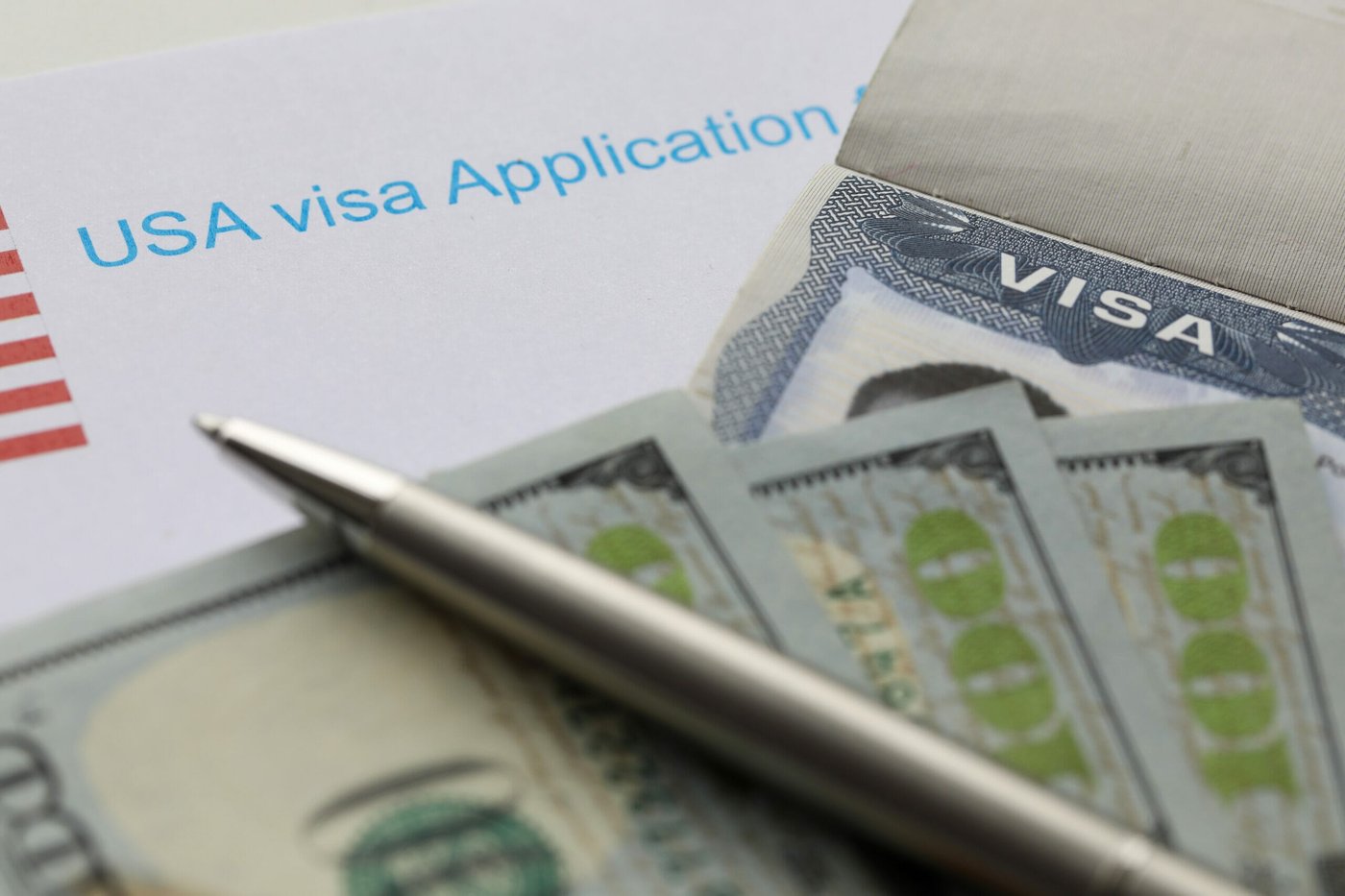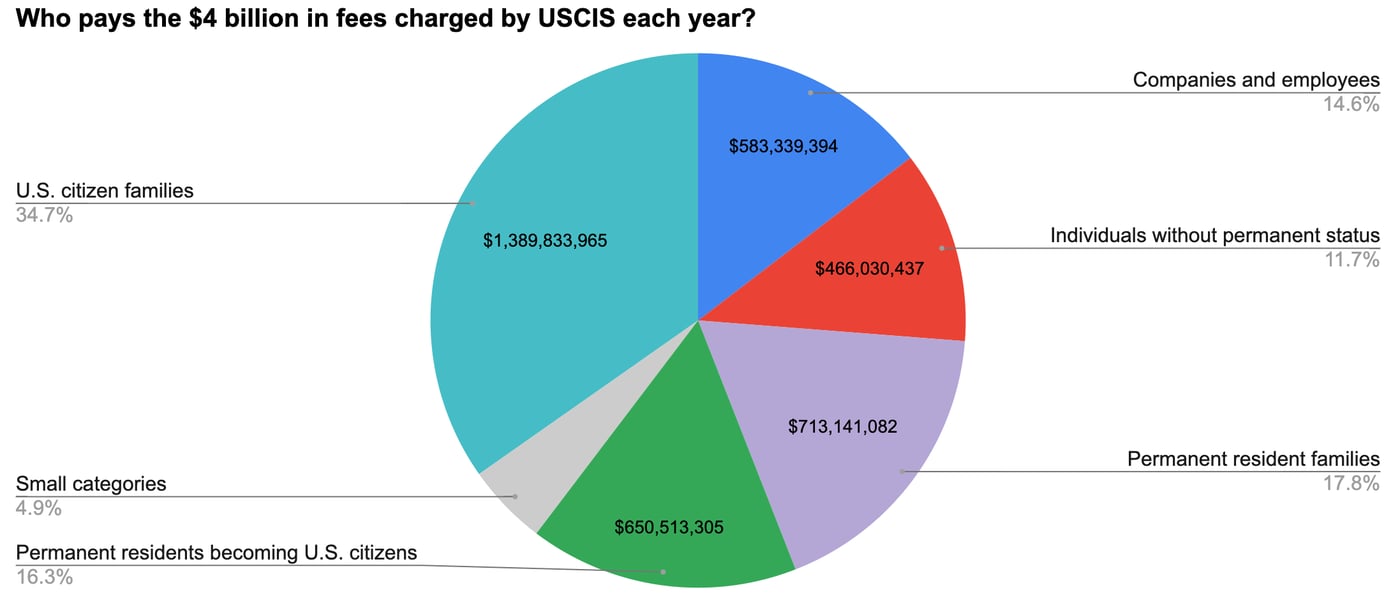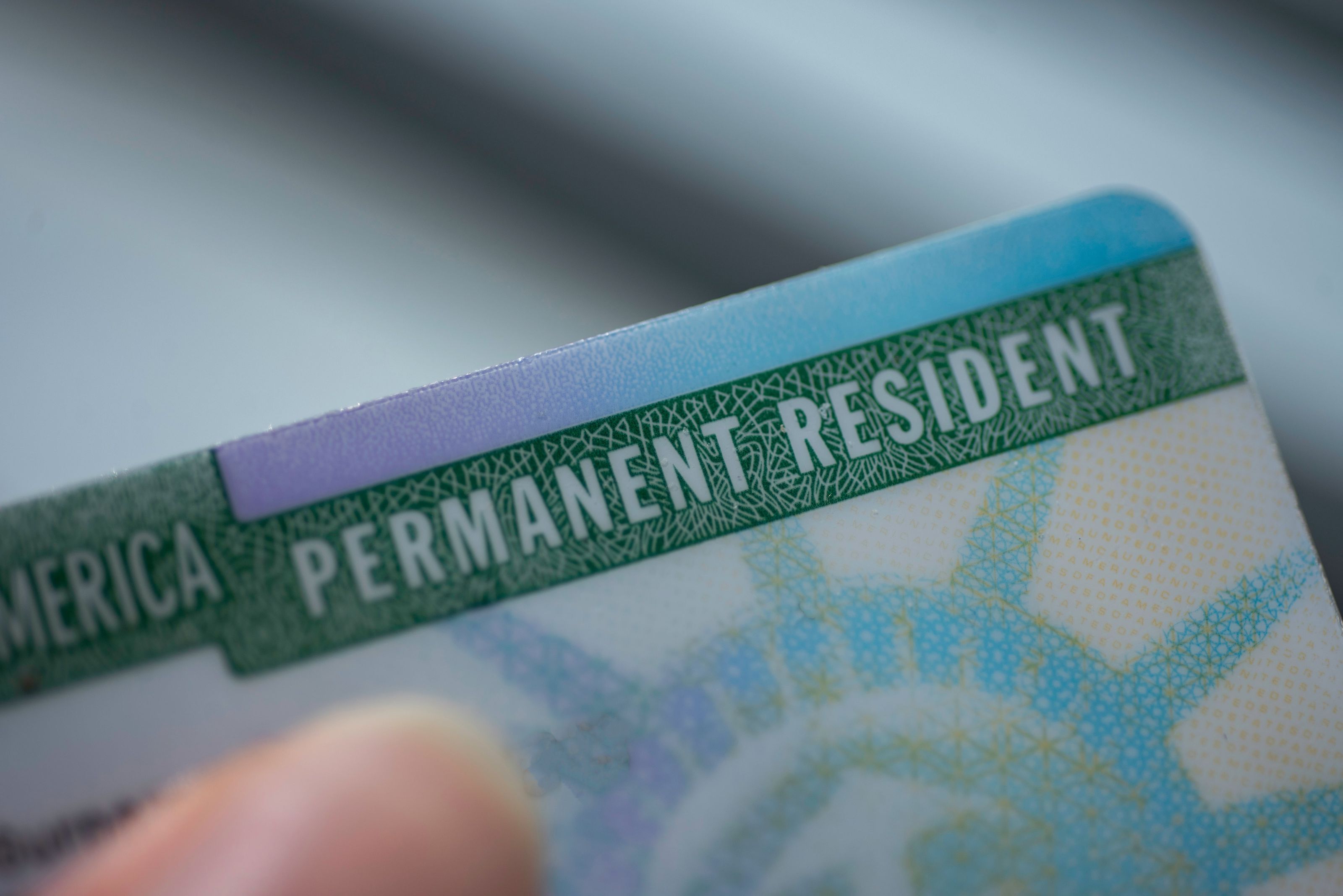
.svg)
Facing an insolvency crisis of its own making, U.S. Citizenship and Immigration Services (USCIS) has threatened to furlough most of its 20,000 employees and effectively shut down the U.S. legal immigration system—unless Congress provides a $1.2 billion bailout before August 3, 2020.
USCIS has proposed to recoup this money by imposing a 10 percent surcharge on all fees paid by its users, and paying back the U.S. Treasury over roughly three years. The Trump administration claims “this deficit neutral approach will come at no additional cost to the U.S. taxpayer.”
But this claim ignores the fact that the vast majority of the individuals and companies who pay USCIS fees are U.S. taxpayers.
Boundless analyzed all of the forms and fees mandated by USCIS, and found that by far the most lucrative class of users is U.S. citizens and their families (35%), followed by permanent residents and their families (18%), permanent residents applying for U.S. citizenship (16%), and companies and their employees (15%).

Whenever USCIS increases its fees—including its looming plan to hike fees by as much as 600%—the burden is felt primarily by U.S. citizens, soon-to-be U.S. citizens, and U.S. companies.
Appendix
Methodology
Boundless used the Fiscal Year 2016 data provided by USCIS in its most recent proposed fee rule to calculate the percentage of agency revenue (i.e. fees) attributable to each form type.
We then assigned a broad category to each form type. In some cases, the categorization is unambiguous: Only “permanent residents becoming U.S. citizens” pay the fees for naturalization forms. In several cases, we used the typical distribution of green card recipients to differentiate among categories within a given form type (e.g. Form I-485 for U.S. citizen relatives vs. permanent resident relatives vs. employees). For some form types—chiefly applications for Employment Authorization Documents and Travel Documents—USCIS does not provide enough data to differentiate among these specific categories, so we used the more general category “individuals without permanent status.”
We used a round number ($4 billion) as a reasonable representation of USCIS’s average total fee receipts in recent years.
Finally, we excluded biometric fees because USCIS proposes to fold these fees into other form types.
.png)
.png)
.png)








.svg)
.avif)